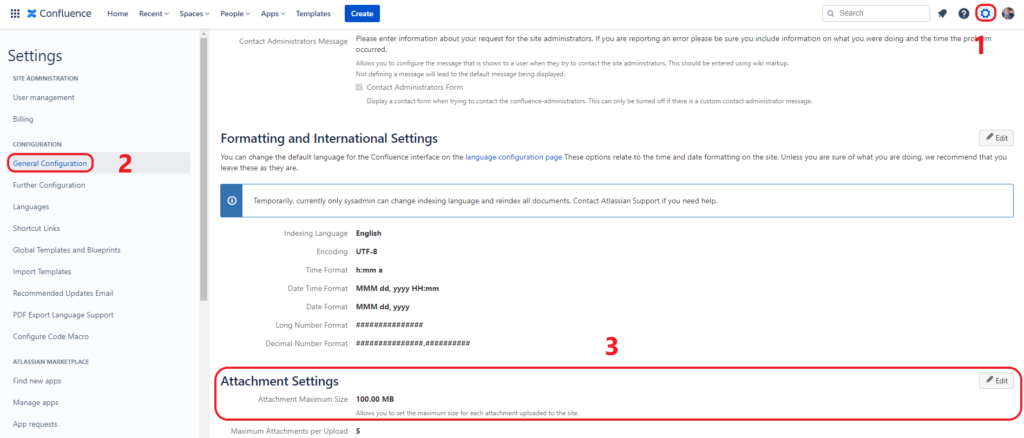Attachments
Mailto.wiki supports attachments in emails. To protect you from attacks and spam, there are several restrictions in place. However, you can adjust these limitations according to your needs on the configuration page (see Getting Started) in the Attachments tab.

Attachment Size & Number of Attachments Limits
You can limit the maximum number of attachments per email and the maximum size of each attachment. Attachments that do not comply with these rules are dropped and are not added to Confluence. The default settings should be suitable for most users.
Due to the restrictions of our mail hoster (AWS), we currently only support emails up to 30MB in size. You cannot send emails that are larger than 30MB in size (content & all attachments combined). All attachments also need to be smaller than the general maximum attachment size set in Confluence. You can check your general maximum attachment size by going to Settings in the navigation panel, General Configuration, and then going to the Attachment Settings section. The default general attachment limit is 100MB, which is significantly larger than the 30MB limit.
There are no platform limitations regarding the number of attachments. The default value after installation is -1, which means no restrictions. You can enter any positive integer if you want to restrict the number of attachments. To disable all attachments, simply set the maximum number of attachments to 0.


File Types
Sometimes, attachments in emails may contain viruses. Therefore, all attachments are scanned by antivirus software. However, there is no such thing as a 100% detection rate. This is why only file types that are considered safe are allowed by default. Windows uses file extensions to categorize files, while the web uses MIME types. To prevent bypassing filters, it is important that file extensions and MIME types are checked and match. You can edit the list of allowed file extensions/MIME types to allow additional file types or to enforce more restrictions.
Allowing New File Types
If you want to allow a new file type as an attachment, you need to follow these 4 steps:
- Click the Add File Type button at the bottom of the page.
- Insert the MIME type in the respective field.
- Insert the file extension in the respective field. Leading dots are ignored.
- Click on Save Settings.

If you do not know the MIME type of the files you want to allow, you can visit the following link to search for it: MIME types.
Disallowing File Types
To disallow a file type, simply delete it from the list. Click on the little trash can icon next to the rule and then click on Save Settings.



